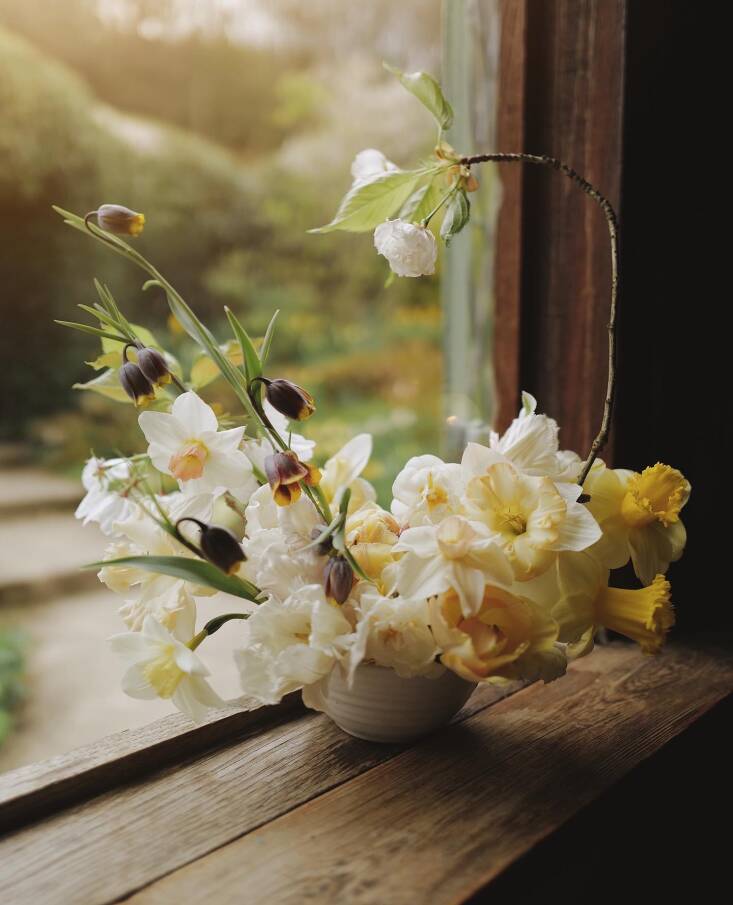Narcissi are the harbingers of spring. They are the cheeriest of flowers that appear at the exact moment we need them, namely, when we are well and truly sick of winter. And while they may be resilient, low-maintenance, and reliable, daffodils (their common name), have arguably never been that cool. But the quest for luscious blooms that we want to cut and bring into the house in spring has seen a revival in these economical flowers.
We may automatically think of the garish yellow bunches appearing in buckets in every supermarket, but this is a vast and diverse group of flowering bulbs, with many thousands of varieties. In fact, the Daffodil Society, which was founded in 1898, and many bulb producers divide narcissi into 13 different groups. And this is not just Victorian whimsy—because there are myriad forms, from the delicate Tazettas and Jonquils to the frilly Trumpets or blousy Doubles that come in shades from white and palest yellow through to deep salmon and coral. For those who are not raising show specimens, the parameters are simple—is it pretty, is it reliable, and do we want to grow it?
Sussex-based florist, grower, and seed seller Milli Proust is an ardent fan of the flower. In early spring her windowsill Wednesdays, in which she makes a seasonal arrangement and takes a picture in the leaded window of her gorgeous cottage, set the stage for the humble narcissi as you’ve never seen it before.
Photography courtesy of Milli Proust.





Narcissi need to be planted, in pots or in the ground, anytime in the autumn, but take note in spring when you see a variety you like so that you can order ahead. Heritage varieties or in-demand new cultivars can sell out fast so, as with tulips, it makes sense to order as early as possible.
And when you are ready to bring them inside, cut the flowers just before they open to ensure the longest vase life. The slimy sap from narcissi is toxic to other flowers so if you want to display them with other blooms, you need to first condition them in a bucket of water on their own for a few hours. Do not cut them again when adding your arrangement.
For more on spring bulbs, see:
- 10 Things Nobody Tells You About Narcissus
- The Garden Decoder: What Does It Mean to ‘Naturalize’ Bulbs?
- Gardening 101: Growing Tulips the New Dutch Way












Have a Question or Comment About This Post?
Join the conversation (0)